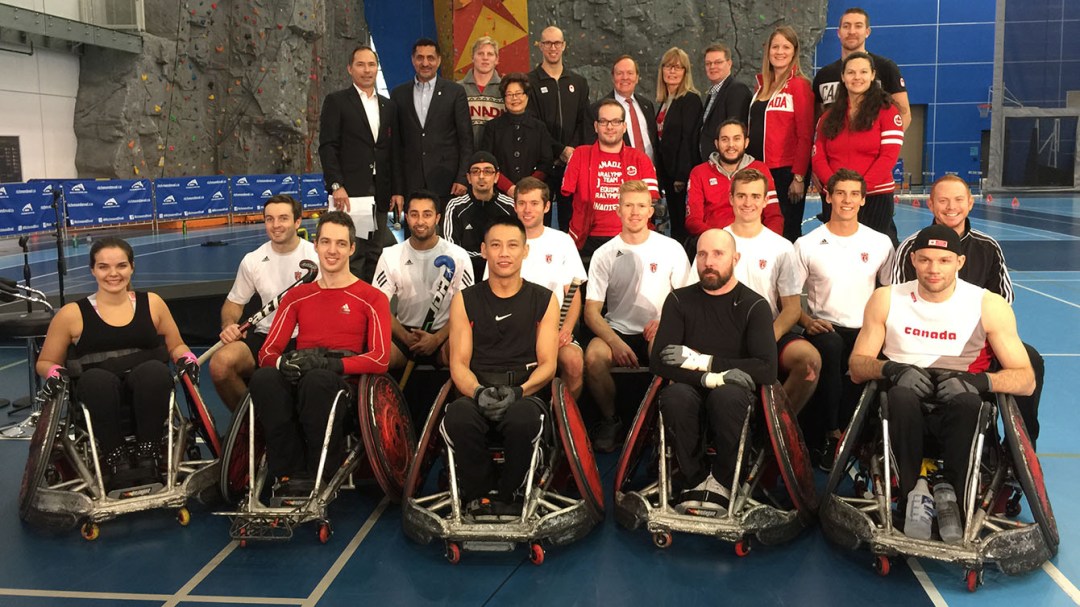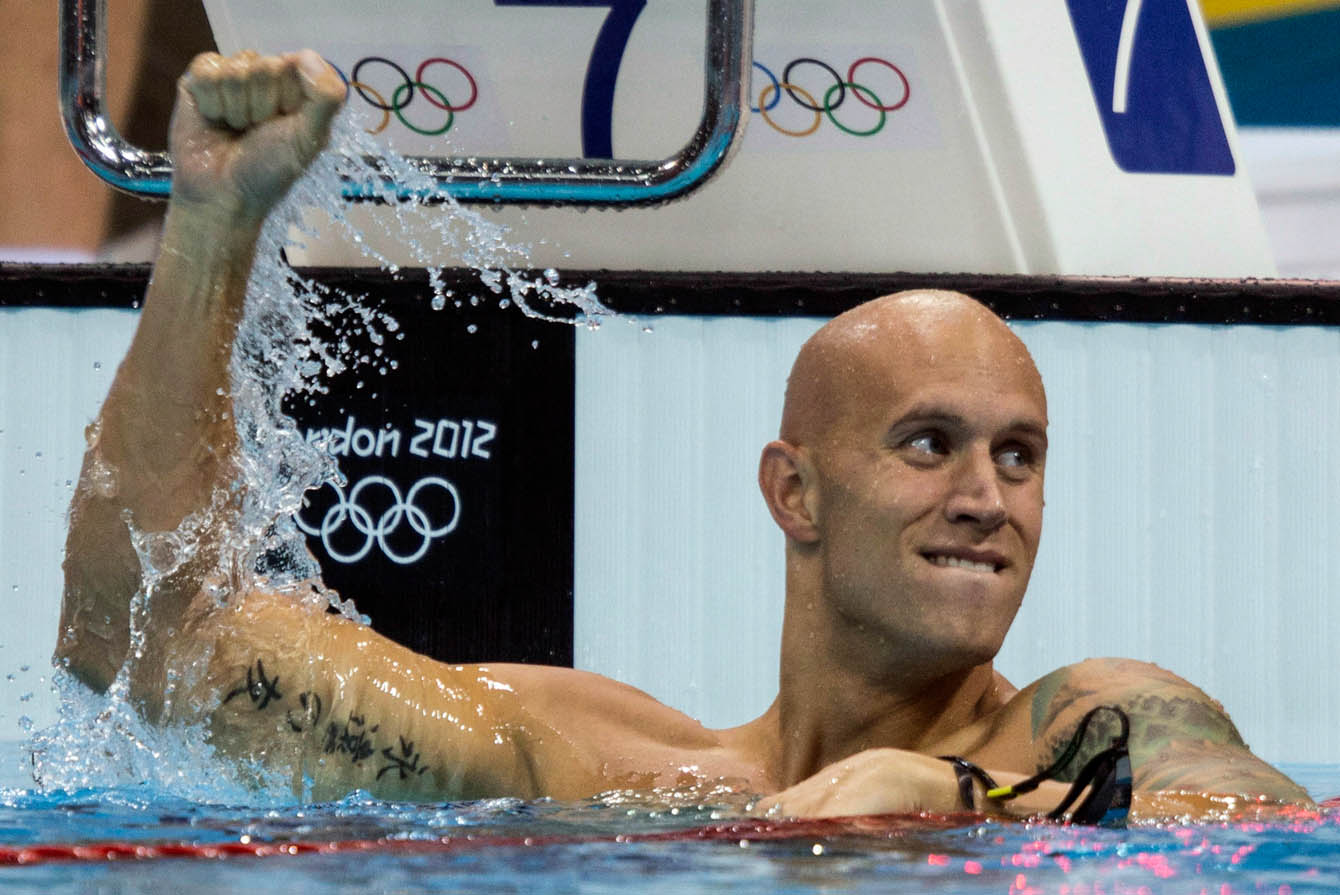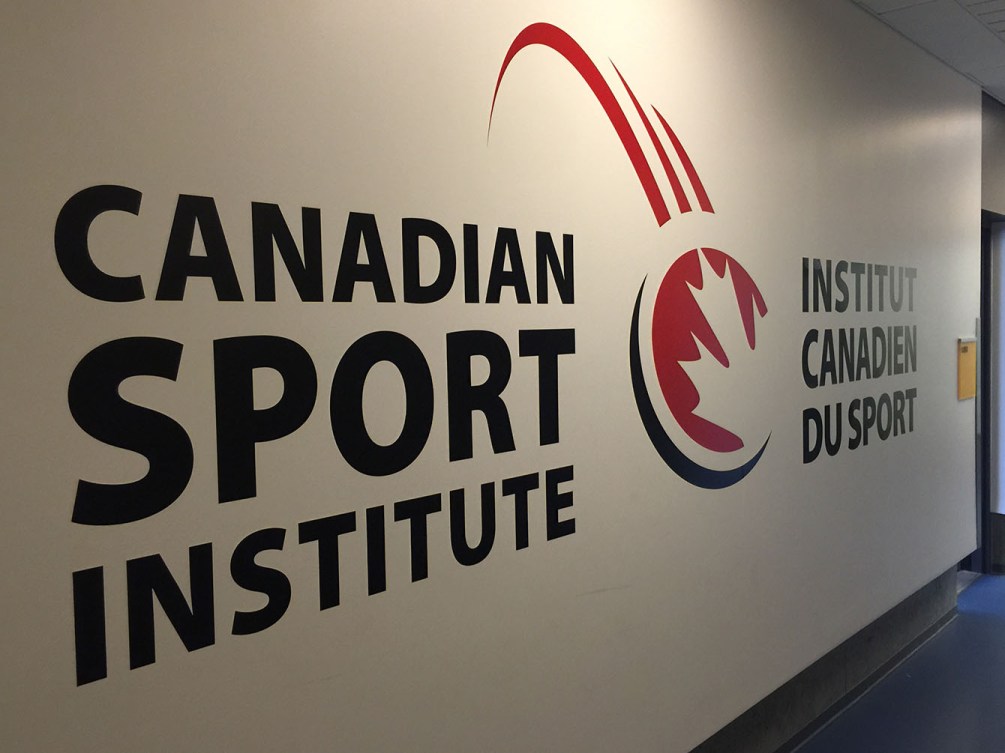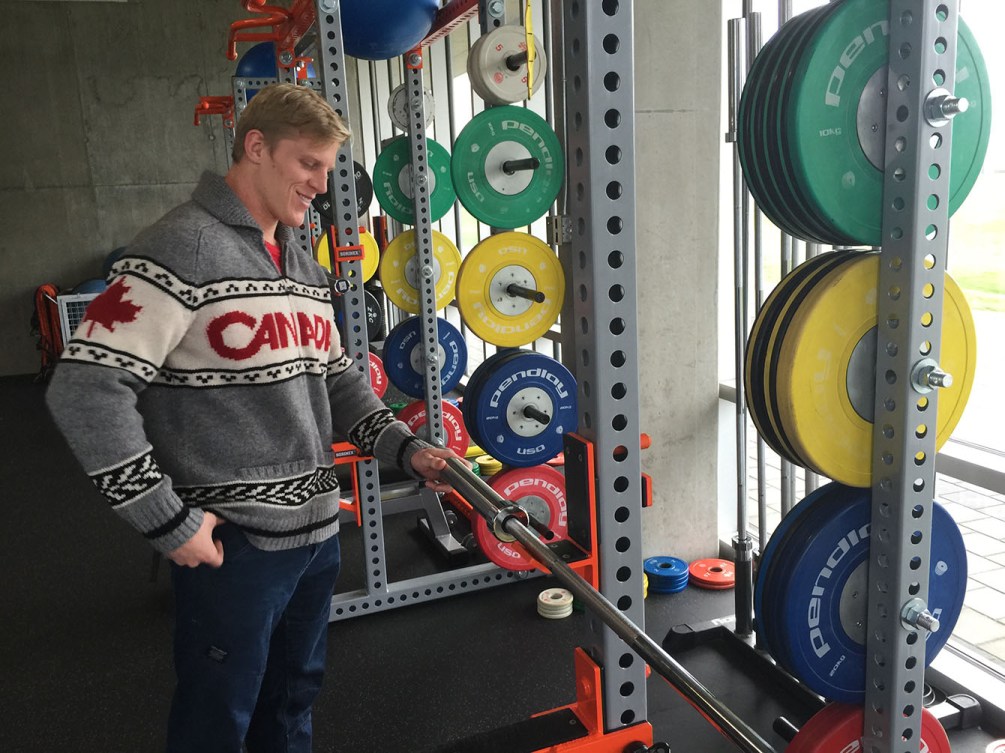What athletes think about the new sport-institute partnership
The high-performance gym at the Richmond Olympic Oval is packed full.
Athletes, reporters, and executive-types mingle as a thick pacific fog embraces the building, so voluminous it obscures the cars whizzing by and disappears the high-rise condo development next door.
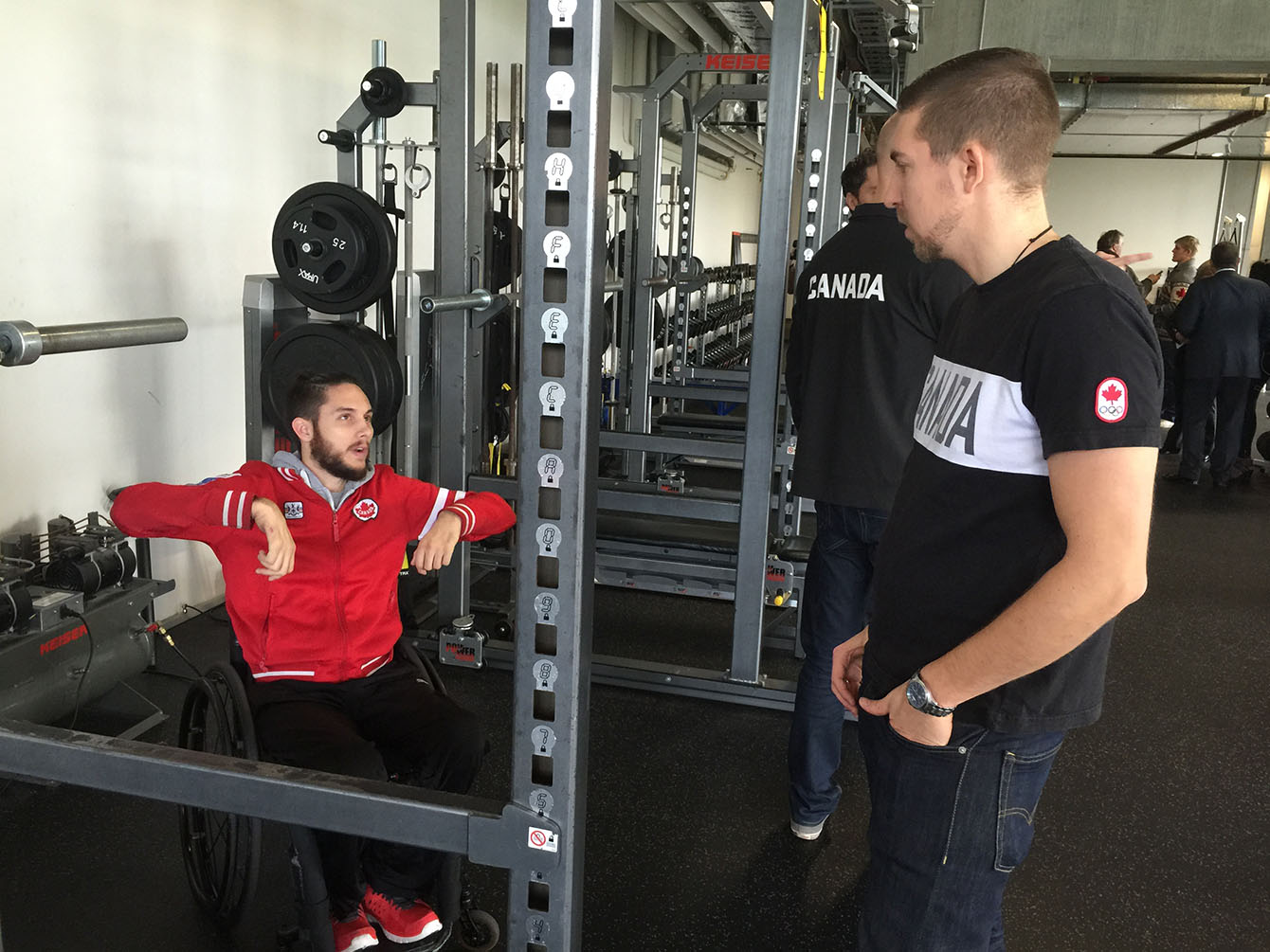
Wheelchair rugby player Trevor Hirschfield explains a hydraulic-lifting system to Olympic swimmer Richard Hortness.
The white wash outside the windows fills the gym with a refreshing light and the place doesn’t feel isolated, but elevated.
Olympic bronze medallist Brent Hayden stares at the rows of gleaming squat racks with their vibrant coloured plates and is amused at how different they are from the rack he used to train with.
“The equipment that we were on was beyond second-hand, it was always rusty, always breaking,” says Hayden, describing the small gym that adjoined the pool on the University of British Columbia campus.
Hayden admits it was nice to have a space for the swimmers, a place where he toiled on the path to the London Olympic podium in the 100m Freestyle. Yet he is convinced of the difference this equipment must make for current athletes.
Many different athletes come through the gym as it is part of the Canadian Sport Institute Pacific. It is one of seven institutes across Canada subject to a new partnership between the Canadian Olympic Committee (COC), the Canadian Paralympic Committee (CPC) and the Institute.
SEE ALSO: Canada’s sport organizations partner to enhance ‘sport-institute’ model
The newly-named “Canadian Olympic and Paralympic Sport Institute Network” will receive a modest $3-million in funding from the COC through 2016. More notable is Canada’s foremost sport organizations are working together, and attaching themselves to the bricks and mortar of the country’s sport institutes. The collaboration involves the government and Own the Podium. It seems, everyone is putting their faith into what can be achieved if more athletes train at facilities like Richmond’s.
Brent Hayden’s former sprint freestyle teammate Richard Hortness had a different experience on his university campus. An Olympic veteran of Beijing and London, Hortness attended the University of Nevada Las Vegas with NCAA Div. 1 teams and a lot of money.
“The funding at a US college is huge, you walk into a gym and it’s unlike anything you’ve ever seen before…it’s like this,” comments Hortness, pointing at the wares inside the Richmond gym.
“There’s a whole bunch of areas that a team can come into that leads to the cross-contamination of excellence.”
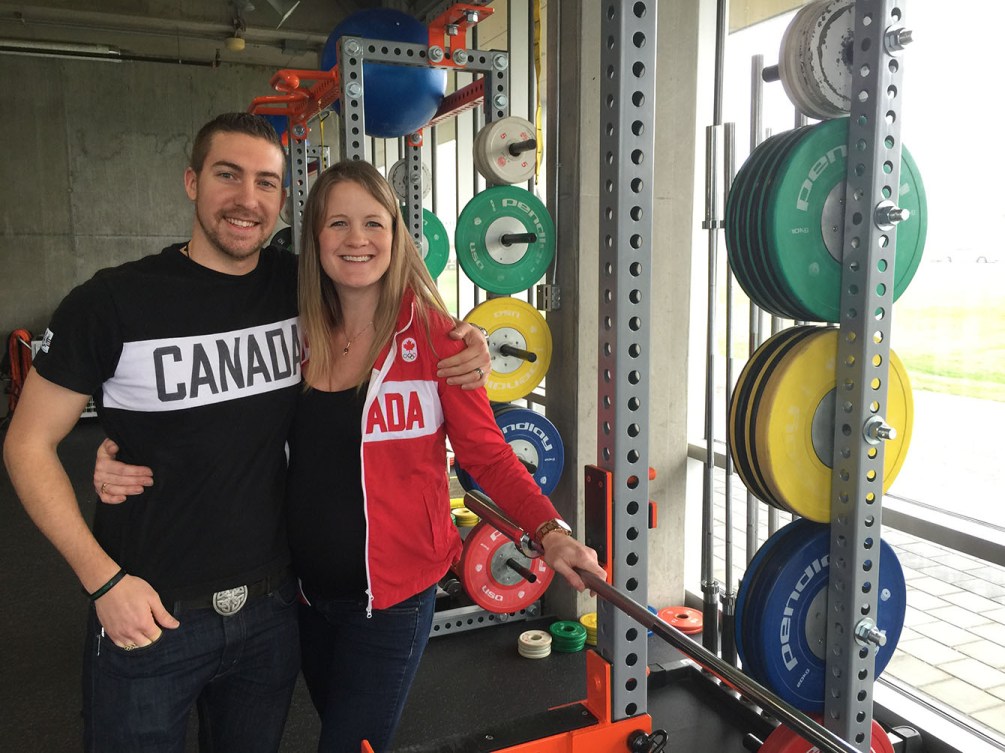
Olympian Richard Hortness with Olympic silver medallist rower Darcy Marquardt in Richmond. They are married.
To be fair, most NCAA gyms are much larger than the one Hortness is standing in, but the quality of equipment is the same. Yet squat racks aren’t the only thing the new partnership hopes will push Canadians onto Olympic podiums.
Rugby Sevens captain John Moonlight and his team are centralized near the institute’s Vancouver Island facilities. Moonlight admits the combination of Rugby Canada’s Langford campus (separate from the sports institute) and working with institute staff has made a measurable difference. Before centralization the men’s sevens team could hardly crack the top-10 on the Sevens World Series. Last year they were a best-ever sixth overall.
Moonlight is nearly 6’4” and weighs 230 lbs and talks about training next to other completely different athletes, “The swimmers, they’re in the pool so long in the day and then they’re in the weight room sometimes throwing around more weight than we are,” he laughs. The team has even learned takedown techniques from UFC fighter Sarah Kaufman, who happens to train at Victoria’s institute as well.
The better facilities, collaboration, and support are really the baseline Canadian athletes require to compete. Especially at the Olympic Games where other countries invest mammoth amounts of money into their athletes. Own the Podium CEO Anne Merklinger is very aware of the funding reality, and in a release said this, “An Olympic or Paralympic champion can be developed in every corner of this country if they have easy access to the proper tools and resources.”
While the question of whether Canada can compete with the hard investment in Olympic athletes remains relevant and on-going. In any case, in that Richmond gym the day-to-day is more pressing for wheelchair rugby captain Trevor Hirschfield, “Being able to have the personal trainer, the sport science and recovery, and also the on-court stuff all under one roof makes it easier and it makes your day a lot shorter,” says the Paralympic bronze and silver medallist.

